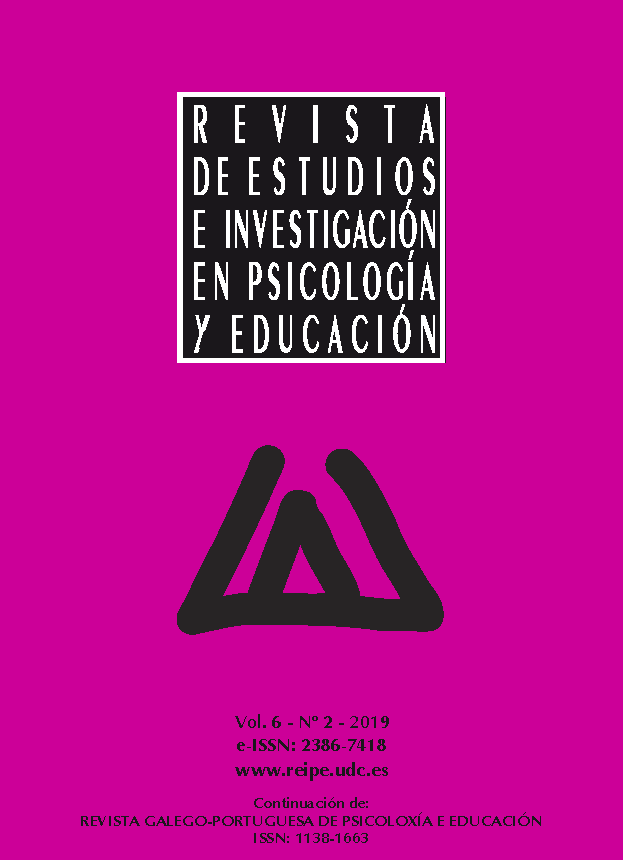The role of family factors and self-regulation: Problem behavior in Georgian adolescents
Main Article Content
Abstract
The aim of this study is to assess the psychosocial factors of adolescents’ problem behavior. Within this research, the relationships among family structure, parental modeling, parental monitoring, and adolescents’ self-regulation were assessed. Data were collected by self-report questionnaires. The sample consisted of 150 participants aged 14 to 17. Sixty adolescents were in conflict with the law, and the other 90 adolescents who did not have such a contact with the legal system. Results show that more adolescents in conflict with the law live in single-parent families than their peers who do not have a similar experience. At the same time, adolescents living with single parents have a higher mean score of problem behavior and a lower mean score of parental monitoring. Correlational and regression analyses revealed that parents’ problem behavior models and parental monitoring are statistically significant predictors of adolescents’ problem behavior. In the present study, self-regulation was revealed to be a significant correlate of adolescents’ problem behavior, and that family factors mediate the relationship between self-regulation and problem behavior. Results also confirm the importance of an approach for the prevention of deviant behavior focused primarily on family supporting measures.
Keywords:
Downloads
Article Details
References
Agnew, R. (2003). An integrated theory of the adolescent peak in offending. Youth and Society, 34(3), 263–299. https://doi.org/10.1177/0044118X02250094
Bandura, A. (1989). Social cognitive theory. In R. Vasta (Ed.), Annals of child development. Vol. 6. Six theories of child development (pp. 1-60). Greenwich, CT: JAI Press.
Bandura A. (1991a). Social cognitive theory of moral thought and action. In W.M.Kurtines, J.L. Gewirtz (Eds). Handbook of moral behavior and Development (3rd Ed., pp.45-105). New York: Lawrence Erlbaum Associates.
Bandura, A. (1991b). Social cognitive theory of self-regulation. Organizational Behavior and Human Decision Process, 50(2), 248-287.
Bartol C.R., Bartol A.M. (2014). (Eds.) Criminal behavior: a psychological approach (10thed.). New Jersey: Pearson.
Caprara, G.V., Scabini, E., Barbaranelli C., Pastorelli, C., Regalia, C., & Bandura, A., (1998). Impact of adolescents’ perceived self-regulatory efficacy on familial communication and antisocial conduct. European Psychologist 3(2), 125-132. https://doi.org/10.1027//1016-9040.3.2.125
Cauffman, E., Steinberg, L. (2001). (Im)maturity of judgement in adolescence: Why adolescents may be less culpable than adults. Behavioral Sciences & The law 18(6), 741-760. https://doi.org/10.1002/bsl.416
Espinosa, P., Clemente, M., (2011). Self-transcendence and self-oriented perspective as mediators between video games playing and aggressive behavior in teenagers. Journal of Community and Applied Social Psychology 23(1), 68-80. https://doi.org/10.1002/casp.2138
Farrington, D.P., & Loeber, R. (1999). Transatlantic replicability of risk factors in the development of delinquency. In P.Cohen, C.Slomkowski, & L.N.Robins (Eds.), Historical and geographical influence on psychopathology (pp.299-329). Mahwah, NJ: Lawrence Erlbaum Associates.
Farrington D.P. (2010). Family influences on delinquency. In D.W. Springer, A.R. Roberts (Eds.). Juvenile justice and Delinquency (pp.203-222). Ontario, Canada: Jones and Bartlett Publishers.
Garfield, C. (2009). Variations in family composition. In H.Feldman (Ed.). Developmental-behavioral pediatric (4th Ed., pp. 94-102). Philadelphia, USA: Saunders, Elsevier.
Gottfredson, M. & Hirschi, T. (1990). A General Theory of Crime. Stanford: Stanford University Press.
Grasmick, H., Tittle, C., Bursik, R., & Arneklev, B., (1993). Testing the Core Empirical Implications of Gottfredson and Hirschi’s General Theory of Crime. Journal of Research in Crime and Delinquency, 30(1), 5–29. https://doi.org/10.1177/0022427893030001002
Jessor R. (2016). (Ed.) The origins and Development of problem behavior theory. Basel, Switzerland: Springer.
Jessor, R., Costa, F. M., & Turbin, M.S. (2002). Adolescent Health and Development Questionnaire. Boulder, Colorado: University of Colorado.
Jessor, R., Turbin, M. S., & Costa, F. M., (2010). Predicting developmental change in healthy eating and regular exercise among adolescents in China and the United States: The role of psychosocial and behavioral protection and risk. Journal of Research on Adolescence, 20, 707-725. https://doi.org/10.1111/j.1532-7795.2010.00656.x
Jessor, R., Turbin, M. S., & Costa, F. M., Dong, Q., Zhang, H., & Wang, C. (2003). Adolescent problem behavior in China and the United States: A cross-national study of psychosocial protective factors. Journal of Research on Adolescence, 13, 329-360. https://doi.org/10.1111/1532-7795.1303004
Kremer, K.P., Flower, A., Huang, J., & Vaugh, M., G. (2016). Behavior problems and children’s academic achievement: A test of growth-curve models with gender and racial differences. Children and Youth Service Review 67, 95-104. https://doi.org/10.1016/j.childyouth.2016.06.003
Moilanen, K. L. (2007). The adolescent self-regulatory inventory: the development and validation of a questionnaire of short-term and long-term self-regulation. Journal of Youth and Adolescence, 36, 835-848. https://doi.org/10.1007/s10964-006-9107-9
Moilanen, K. L., Shaw, D., & Fitzpatrick, A., (2009). Self-regulation in early adolescence: Regulations with mother-son relationship quality and Maternal regulatory support and Antagonism. Journal of Youth and Adolescence 39(11), 1357-67. https://doi.org/10.1007/s10964-009-9485-x
Moffitt, T. E. (2018). Male antisocial behaviour in adolescence and beyond.” Nature human behavior, 2, 177-186.
Piquero, A. R., Farrington, D. P. & Blumstein, A. (2007). Key issues in criminal career research: New analyses of the Cambridge Study in Delinquent Development. New York: Cambridge University Press.
Siegel, L.J., & Welsh, B.C., (Eds.). (2017). Juvenile Delinquency: The core (6th ed.). Boston, USA: Cengage Learning.
Smith, C. A., & Stern, S. B. (1997). Delinquency and Antisocial Behavior: A Review of Family Processes and Intervention Research. Social Service Review, 71, 382-420. https://doi.org/10.1086/604263
Steinberg, L., (2009). Adolescent development and Juvenile justice. Annual Review of Clinical Psychology 5, 459-485. https://doi.org/10.1146/annurev.clinpsy.032408.153603
The United Nations Development Programme: “To Enhance Gender Equality in Georgia”. (2013). Public perception on gender equality in politics and business. Tbilisi, Georgia: UNDP.
Trudeau, L., Mason, W. A., Randall, G. K., Spoth, R., & Ralston, E. (2012). Effects of parenting and Deviant peers on early to mid-adolescent conduct problems. Journal of Abnormal Child Psychology, 40(8), 1249–1264. https://doi.org/10.1007/s10802-012-9648-1
Turbin, M. S., Jessor, R., Costa, F. M., Dong, Q., Zhang, H., & Wang, C. (2006). Protective and risk factors in health-enhancing behavior among adolescents in china and the United States: Does social context matter? Health Psychology, 25(4), 445-454. https://doi.org/10.1037/0278-6133.25.4.445
Walsh, A., & Beaver, K. M. (Eds). (2009). Biosocial criminology: New directions in theory and research. New York: Routledge.



